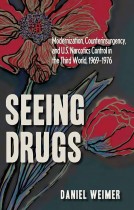The Salmon P. Chase Papers, Volume 3
John Niven | Filed under: Biography
The third volume of The Salmon P. Chase Papers documents Chase’s career from early 1868—the beginning of his second terms as the governor of Ohio—through the pivotal election of 1860 and the first two years of his service as secretary of the Treasury in Abraham Lincoln’s wartime cabinet. Now for the first time there is ready access to a crucial record of the nation’s descent into civil war. The National Historical Publications and Records Commission provides financial support for the publication of The Salmon P. Chase Papers.










